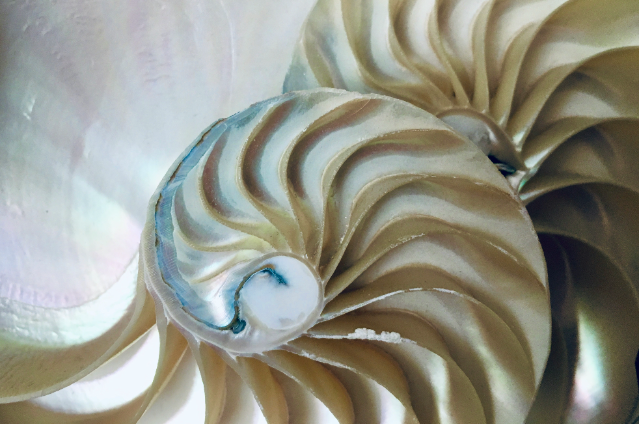
Photo by Giulia May on Unsplash
Nature is a masterful artist, painting the world with intricate designs that captivate the human imagination. While these patterns may seem to be purely aesthetic, they often follow the rigid rules of mathematics. From the spirals of a sunflower to the hexagonal structure of a honeycomb, mathematical patterns are woven into the very fabric of nature, offering a glimpse into the underlying order of the universe.
The Fibonacci Sequence and the Golden Ratio
One of the most famous examples of mathematical patterns in nature is the Fibonacci sequence. This sequence, where each number is the sum of the two preceding ones (1, 1, 2, 3, 5, 8, 13, and so on), appears in various natural forms. For instance, the arrangement of leaves around a stem, the branching of trees, and the spiral patterns of shells and galaxies all follow the Fibonacci sequence.
The connection between the Fibonacci sequence and the Golden Ratio (approximately 1.618) is equally fascinating. When you divide consecutive Fibonacci numbers, the ratios increasingly approximate the Golden Ratio. This ratio is often associated with aesthetically pleasing proportions and is evident in the spirals of sunflower seeds, pinecones, and even hurricanes.
Fractals in Nature
Fractals are another mathematical concept that appears frequently in nature. A fractal is a self-similar pattern, meaning that its structure is repeated at different scales. The most famous example of a fractal is the Mandelbrot set, a complex mathematical shape that reveals infinite detail as you zoom in.
In nature, fractals can be seen in the branching patterns of trees, the veins of leaves, the shapes of mountains, and the formation of clouds. These natural fractals are not identical to the perfect mathematical fractals but are considered "approximate fractals." For example, the branching pattern of a river and its tributaries closely resembles the branching pattern of a tree, demonstrating how fractal geometry can model natural forms.
Hexagons and Honeycombs
The hexagon is another geometric shape that is abundant in nature, particularly in the structure of honeycombs. Honeybees construct their honeycombs using hexagonal cells, a design that is both efficient and strong. The hexagon is the shape that allows for the most efficient use of space and building materials, covering a plane with the least amount of material while maximizing the storage capacity.
The hexagonal pattern also appears in the formation of snowflakes and certain crystal structures. This recurrence is not coincidental but a result of the inherent properties of these systems. The hexagon emerges naturally in situations where forces seek to minimize energy or where natural growth processes follow simple rules.
Spirals and the Logarithmic Spiral
Spirals are another common mathematical pattern in nature. One of the most intriguing types is the logarithmic spiral, which maintains its shape as it grows. This spiral appears in the shells of mollusks, the arrangement of seeds in a sunflower, and the arms of spiral galaxies.
The logarithmic spiral is related to the Fibonacci sequence and the Golden Ratio. In a sunflower, the number of spirals in each direction usually corresponds to consecutive Fibonacci numbers, and the spiral itself approximates a logarithmic spiral. This efficient packing pattern allows plants to maximize exposure to sunlight and space for growth.
Conclusion: The Universality of Mathematical Patterns
Mathematical patterns in nature are more than just fascinating coincidences; they are a testament to the inherent order and beauty of the natural world. These patterns reveal how fundamental mathematical principles govern the growth, structure, and behavior of living and non-living systems.
Understanding these patterns not only deepens our appreciation of nature but also enhances our ability to model and predict natural phenomena. Whether in the spirals of galaxies or the symmetry of flowers, mathematics provides a universal language that describes the intricate designs of the universe. As we continue to explore these patterns, we uncover more about the hidden mathematical fabric that underlies the world around us.
A highly detailed image that captures various mathematical patterns found in nature. The image should include elements like a sunflower showing its spiral seed pattern based on the Fibonacci sequence, the branching pattern of trees resembling fractal geometry, a honeycomb with its perfect hexagonal cells, and a spiral shell exhibiting a logarithmic spiral. The background should feature subtle hints of mountains with fractal-like patterns and a few snowflakes with hexagonal symmetry to illustrate the variety of these patterns in nature. The colors should be natural, with greens, yellows, and browns dominating to reflect the organic origins of these patterns.
